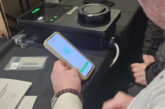
Matthew Holliday, the National Security Inspectorate’s Director of Approval Schemes, describes the business opportunities for electricians offered through the installation of detector-activated visual surveillance alarms and how this technology can significantly minimise risk.
Security alarm systems can provide effective protection for a variety of premises, helping to ensure the safety of property, their infrastructure, equipment, stock and their occupants – be they employees, other users or visitors.
Fundamental changes introduced to the latest BS 8418:2021 (Design, installation, commissioning and maintenance of detector-activated video surveillance systems (VSS) – Code of practice) are a game-changer in the wider adoption of Police URNs (Unique Reference Numbers) for surveillance monitored alarm systems (using CCTV cameras), qualifying premises for police response from their local constabulary.
Simplifying the process
Previously, onerous technical and operational requirements of this standard, combined with the relatively high cost of compliant remote video verification equipment (when compared with alternative technology), restricted their rollout.
All this has changed following several major alterations to BS 8418:2021, key among them being the introduction of a fresh, two-tiered risk-based approach. A new ‘Type A’ installation classification for lower risk sites has proved to be the catalyst, enabling usage of image transmission to remote alarm receiving centres (ARCs) and dedicated remote video response centres (RVRCs), where alarm verification operators at these centres screen out false alarms using recognised techniques.
Examining ‘Type A’ levels
The simpler requirements of ‘Type A’ systems are encouraging significantly greater use of remote video monitoring, which offers a range of benefits when compared with other methods of alarm confirmation. These include sequential confirmation, which may only indicate that an intruder has passed two detection points within a premises. Similarly, audio confirmation can be difficult to make sense of, in terms of understanding what the sounds indicate – potentially causing a vital delay in response.
‘Type A+’ enhanced level systems, designed to suit higher risk industrial, military, utilities and other similar sites, continue to use similar technical and installation requirements as the previous (2015) edition of BS 8418. The new ‘Type A’ level does not represent any dilution of requirements; it maintains minimum recommendations for systems, based on a site threat assessment and risk analysis. Prescribed technical standards for operations, including detection and alarm transmission, must be met.
Operational approval
Compared with sequential and audio methods, visual confirmation has moved to the fore in terms of its technological abilities, helping to significantly reduce false alarm calls to the police due to the advanced interrogation capability when monitored by an NSI-approved video monitoring centre (ARC or RVRC). This is a reliable and proven method – hence its adoption by the National Police Chiefs’ Council (NPCC) for an immediate response to a confirmed intrusion event.
It’s essential to be mindful of police requirements when installing visual surveillance systems. An intruder alarm system monitored by an ARC or RVRC must meet recognised industry standards accepted by the NPCC in England, Wales and Northern Ireland and similar policy requirements from Police Scotland.
The NPCC’s Security Systems requirements detail how compliant systems should be installed, monitored and maintained. They also require companies providing this service to be approved by a UKAS-accredited Certification Body such as NSI and registered with a local police force.
If a security system isn’t compliant there won’t be an immediate police response, which could prove vital if someone is in danger or property is being stolen.
Effective deterrence
Use of monitored visual surveillance system technology provides a number of tangible benefits. It provides better protection for buyers, reduces pressure on police resources, enables enhanced integration with other building systems and could offer positive insurance premium implications. VSS equipment can be used in external, perimeter-based situations as a proactive way of determining, for example, whether a person loitering should be reported as a potential risk/threat.
In practice, where ARC/RVRC operators are alerted to potentially suspicious behaviour, they can use the cameras to view the scene and use audio announcements via P.A. systems to verbally address anyone present at the site and issue warnings and/or instructions. Where situations escalate, a response team could be summoned to take further action.
Should the situation escalate, ARC/RVRC operators can then use the site’s system in a secondary role to determine the authenticity of a detected intrusion, and if proved genuine, pass this on for an immediate manned police alarm response.
Visual surveillance systems also provide a visible site perimeter deterrence through the presence of CCTV cameras, potentially avoiding a break-in, subsequent site damage and related losses in terms of threat to staff, visitors, damage to buildings, loss of stock, harm to equipment, and time taken in remedial action.
Hallmark approval
Third-party certification represents a highly respected and trusted hallmark for professional electricians, quickly demonstrating their technical expertise and a reassuring quality of service for their customers.
It provides their customers with the added confidence that they install systems backed by Certificates of Compliance, independently demonstrating their conformance with NPCC requirements and approval from a police-recognised Certification Body, such as the National Security Inspectorate – which itself holds accreditation from UKAS.
To get more details about the National Security Inspectorate and its work, click here








